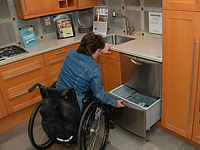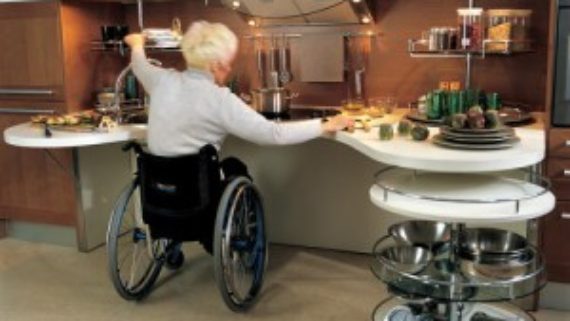Universal Design

As you plan your new kitchen, consider how you can incorporate the common-sense principles of universal design, a branch of design that takes its name from its all-ages, all-abilities approach to space planning.
The basic idea is that if you build or remodel your kitchen with universal design principles, you can ensure that anyone who ties on an apron will be able to comfortably and safely whip up dinner or wash the dishes. Universal design guidelines can make the kitchen more practical for your kids after school, for your elderly in-laws at holiday dinners, for a loved one who requires wheelchair accessibility, or for yourself as you grow older and your own physical needs change.
The guidelines go beyond accessible housing rules that have gotten a bad rap over the years for their often clinical, institutional elements, such as metallic grab bars in the shower. Universal design principles not only consider accessibility but also style and what will benefit the most people, regardless of age or physical health.
For example, dishwashers in drawer units can make cleanup more convenient for everyone, whether someone has a bad back or not. Likewise, magnetic touch-and-release cabinet doors make access easy for arthritic hands or for those of a 7-year-old, without sacrificing creative design.
Universal design also aims to eliminate the expense and hassle of constantly adapting your home to your changing needs.
As you read through the general principles of universal design and how they can be applied to kitchens, you’ll probably start thinking that the recommendations sound like plain old common sense. That’s the point. Don’t leave common sense out of your kitchen design!
And, if you do have special needs, such as wheelchair accessibility or extra lighting, realize that you can meet those needs and still cook and entertain in a stylish and beautiful space.


